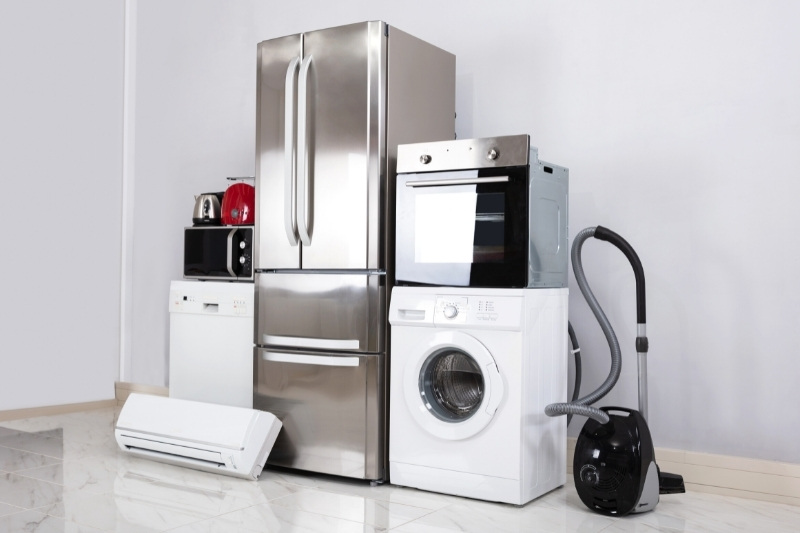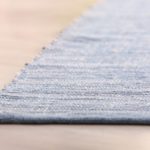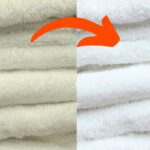If you’ve recently bought your first house, you might’ve been told by your relatives to go and start getting “white goods” in.
But what are these so-called “white goods”?
Are people really telling you to go out and buy all white furniture, lamps and rugs? That all sounds very clinical, doesn’t it!
So, let me put an end to your confusion.
The term “white goods” mainly refers to the big items that go in your kitchen or utility room. These include fridges, freezers, washing machines and so on.
So, without further ado, join me and discover what white goods are here in the UK, and find out what appliances you need to buy to make your life smoother.
What Are “White Goods”?
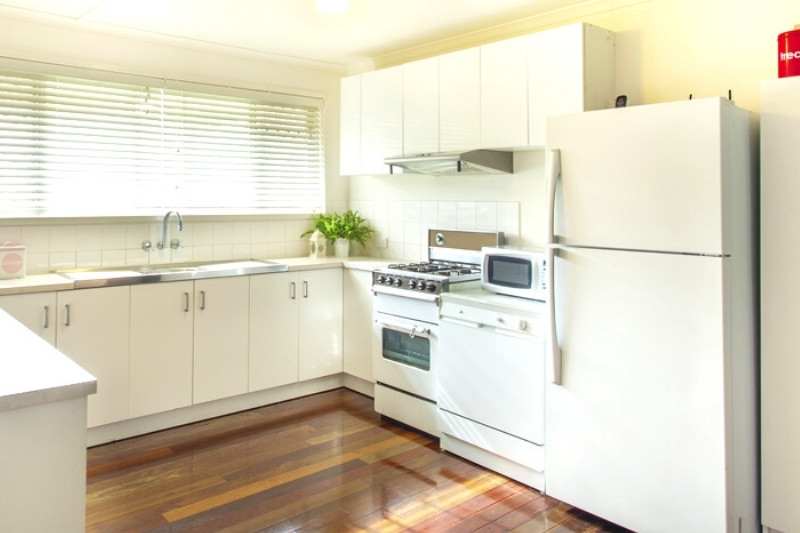
White goods are large home appliances that are typically found in the kitchen.
Their purpose is to make our lives more comfortable by ensuring that our food is preserved and kept chilled (fridge/freezer), our daily cleaning tasks can be completed (washing machine/tumble dryer/dishwasher), and that we can cook meals (cooker).
Years ago, these big appliances were usually only white in colour, hence the name.
But over the years manufacturers have started to make domestic appliances in various colours.
Generally, appliances that fall into this category are very heavy and cannot be moved easily around a home.
They also need connecting to either gas, water or electricity, so they are limited to where they can be placed in a house.
For example, a dishwasher needs to be plumbed in. Fridges and freezers, on the other hand, need to be near electricity sockets to work. And some tumble dryers need to be next to a vent to function properly.
White goods are usually built to last several years, so they’re not items that you go out to buy every week.
Instead, they’re durable and should stick around with you for a long time, even if you move house!
You can pick up most white goods in stores like Currys, Argos, and online at Amazon, Euronics, AO and Appliances Direct.
White goods usually have quite big price tags, so before you buy any appliance that falls under this name you should do plenty of research into what brands, models and features you want to get.
There are many white goods available to purchase today in the UK, and there are usually different variations of each of these appliances to be had. So, keeping an eye out for any specific characteristics you’d need your white goods to have is essential.
Washing machines, for example, come with different drum sizes – 5 kg to 12 kg. So, the more washing you need to do, the bigger the drum inside the washing machine will need to be!
You can also get dial/button or app operated machines. So, if you’d like to be more techy, you could get a modern washing machine that can be controlled by your phone.
List of White Goods
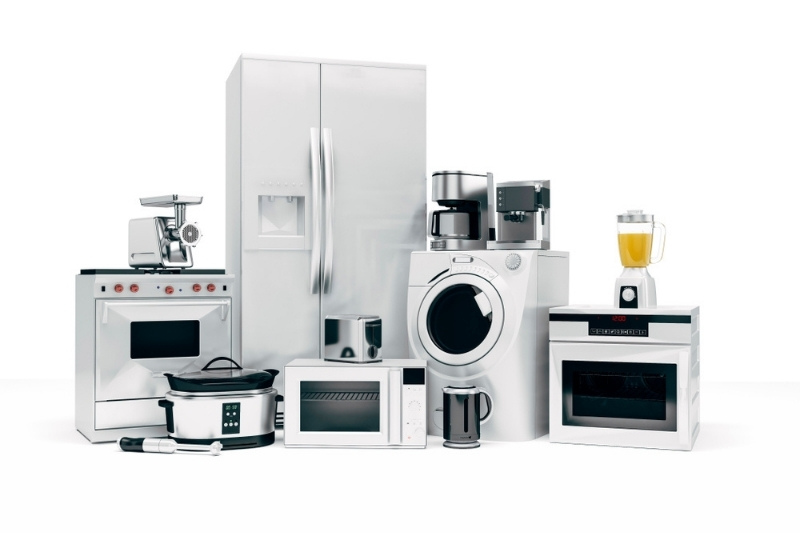
Below you’ll find a list of appliances that are considered “white goods” in the UK:
- Tumble dryers – including vented, heat pump and condenser models
- Washing machines – including washer-dryer, freestanding, top-loading and integrated models
- Fridges
- Freezers
- Fridge-freezer combos
- Cookers – (Other names for this include, stoves, ranges, cooker and oven)
- Dishwashers
- Water coolers
- Air conditioners
- Microwaves
- Ice makers
- Water heaters
What Other Names Do “White Goods” Have?
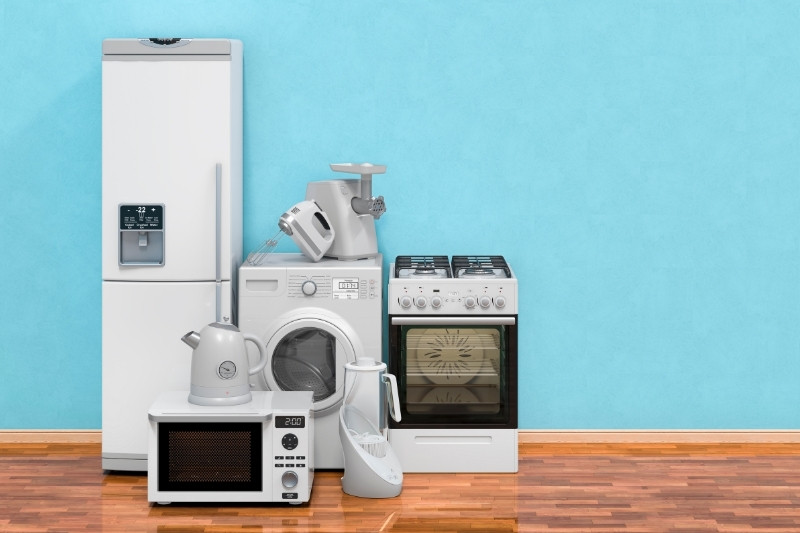
If you’ve done some reading around online you might’ve come across a few different names for white goods. So, to clear up any confusion, here are some other names for these kinds of goods here in the UK:
- Large domestic appliance
- Large appliance
- Major appliance
- Appliance
- Domestic appliance
- Large electric appliance
- Large domestic
- Large electric good
- Kitchen appliance
Is A Toilet A “White Good”?

No, a toilet is not considered a white good, even though it’s white in colour. A toilet is, in fact, part of the “plumbing fixtures” family. This family also covers baths, sinks, bidets, water fountains and showers.
To be a part of the plumbing futures group, a fixture, like a toilet, needs to be attached to a plumbing system, whereby water can go in and can then drain away from the fixture, via a piece of pipework.
The major differences between white goods and plumbing fixtures are that white goods typically need electricity to work, whereas plumbing fixtures can work fine without electricity.
Plumbing fixtures are also considered stationary items. They cannot move around because they are plumbed and sealed in place.
A “white good”, in contrast, is normally heavy and tough to move around, but if you really need to move the items you can do so.
However, you cannot always move white goods to any old random spot in a home, because some appliances need a specific environment to work in.
Dishwashers, for example, need a water supply and a drainage system, so they can’t just be stuck up against a brick wall.
Is a TV a “White Good”?

No, a television, of any brand or size, is not classified as a white good. A TV is, in fact, part of the “brown goods” group.
Brown goods refers to more easy-to-handle, lightweight electronic goods, like radios, DVD players, computers and consoles.
These goods are different to white goods because they are not bulky and weighty, and instead they can be transported around a house fairly easily.
You cannot easily move a fridge upstairs or around your house, but a TV can be picked up with ease, for example.
However, both white and brown goods are there to make our lives more comfortable and pleasant. And they’re both made to last a long time.

Bethan has a passion for exploring, reading, cooking and gardening! When she’s not creating culinary delights for her family, she’s concocting potions to keep her house clean!
